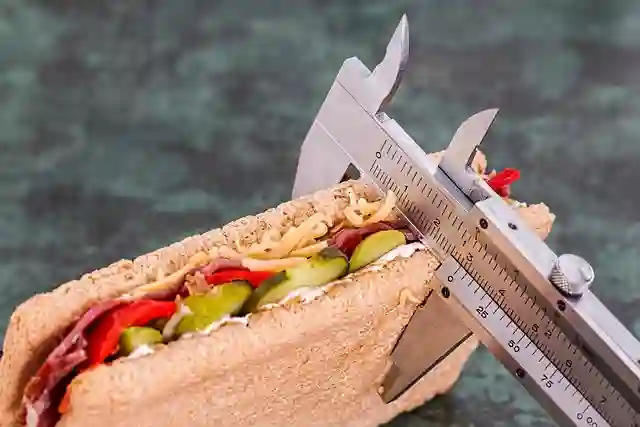The Ultimate Guide to the Elimination Diet
Table of Contents
- Introduction and Overview
- Foods to Eliminate
- Foods to Include
- Meal Planning and Recipes
- Managing the Elimination Phase
- Health Conditions and an Elimination Diet
- Beyond the Elimination Diet
Introduction and Overview
An elimination diet is a short-term eating plan that aims to identify foods that may be causing unwanted symptoms or allergic reactions. By removing certain foods from your diet, you can then reintroduce them one at a time to see how your body reacts. This can help you identify the foods that may be causing issues and develop a more personalized, healthy diet.
It can vary in length, but typically last between three and six weeks. During this time, it’s important to focus on nutrient-dense foods and avoid processed foods and added sugars. It is not a weight-loss diet, but rather a tool to help identify food triggers for various health conditions.
How does it work?
It works by systematically removing foods that are known to cause allergic reactions or intolerance, and then reintroducing them one by one to see how the body responds. By keeping a food journal, you can track any symptoms or reactions to each food.
Benefits
It can help identify food triggers for various health conditions, including digestive issues, skin conditions, and autoimmune disorders. It can also help improve overall health and well-being by promoting the consumption of nutrient-dense foods and eliminating processed foods.
Who can benefit from it?
It may be helpful for anyone experiencing symptoms that may be related to food intolerances or allergies, including digestive issues, skin conditions, joint pain, and headaches. It’s important to work with a healthcare provider before starting an elimination diet, especially if you have a history of disordered eating or if you are pregnant or breastfeeding.
How long should it last?
It typically lasts between three and six weeks, but the length can vary depending on the individual and their specific health condition. It’s important to work with a healthcare provider to determine the appropriate length of the elimination diet.
Risks and side effects of an elimination diet
It can be challenging to follow and may require significant meal planning and preparation. Some people may experience withdrawal symptoms when removing certain foods, and reintroducing foods too quickly can cause adverse reactions. It’s important to work with a healthcare provider to ensure that the elimination diet is safe and appropriate for your individual needs.
Foods to Eliminate
Common food allergens to eliminate
- Dairy
- Eggs
- Gluten
- Soy
- Shellfish
- Tree nuts
- Peanuts
Other foods to eliminate on an elimination diet
- Processed and packaged foods
- Added sugars and sweeteners
- Artificial flavors and colors
- Caffeine and alcohol
Hidden sources of common allergens
It’s important to carefully read food labels when following an elimination diet, as many common allergens can be found in unexpected places. For example, dairy can be found in baked goods, sauces, and even some brands of canned tuna. Gluten can be found in soy sauce, salad dressings, and many other condiments.
How to read food labels on an elimination diet
When reading food labels on an elimination diet, it’s important to look for the following ingredients:
- Wheat, barley, and rye (for gluten)
- Milk, cheese, and yogurt (for dairy)
- Soy sauce and tofu (for soy)
- Peanut oil and peanut butter (for peanuts)
- Shrimp, crab, and lobster (for shellfish)
- Almonds, cashews, and walnuts (for tree nuts)
Foods to Include
Nutrient-dense foods to include on an elimination diet
While following an elimination diet, it’s important to focus on consuming nutrient-dense foods that will provide your body with the vitamins and minerals it needs. Some examples of nutrient-dense foods to include are:
- Leafy green vegetables, such as spinach and kale
- Colorful fruits and vegetables, such as berries, carrots, and sweet potatoes
- Healthy fats, such as avocado, olive oil, and nuts
- Lean sources of protein, such as chicken, turkey, and fish
- Whole grains, such as quinoa and brown rice (if not eliminating gluten)
Recommended sources of protein and carbohydrates
If you are eliminating certain sources of protein or carbohydrates, it’s important to find alternative sources that will provide your body with the necessary nutrients. Some examples of recommended sources of protein and carbohydrates on an elimination diet are:
- Protein: lentils, chickpeas, quinoa, wild-caught fish
- Carbohydrates: sweet potatoes, quinoa, gluten-free oats
Plant-based sources of protein for vegetarians and vegans
If you are following a vegetarian or vegan diet, it’s still possible to get enough protein on an elimination diet. Some plant-based sources of protein include:
- Legumes, such as lentils, chickpeas, and black beans
- Nuts and seeds, such as almonds, cashews, and chia seeds
- Quinoa, tofu, and tempeh
Fruits and vegetables that are safe on an elimination diet
Most fruits and vegetables are safe to eat on an elimination diet, but there are some that may be more likely to cause allergic reactions or intolerance in some people. Some fruits and vegetables that are generally well-tolerated on an elimination diet include:
- Berries, such as blueberries, strawberries, and raspberries
- Leafy greens, such as spinach, kale, and Swiss chard
- Root vegetables, such as sweet potatoes, carrots, and parsnips
- Citrus fruits, such as oranges and grapefruits
Meal Planning and Recipes
Tips for meal planning on an elimination diet
- Plan your meals in advance to avoid last-minute decisions that may be more difficult on an elimination diet.
- Focus on whole, nutrient-dense foods that will keep you feeling full and satisfied.
- Experiment with new recipes and flavors to keep meals interesting and flavorful.
- Prepare meals in advance when possible to make it easier to stick to it.
Simple recipes
- Grilled chicken with roasted sweet potatoes and steamed broccoli
- Black bean and vegetable stir-fry with quinoa
- Baked salmon with roasted asparagus and quinoa
- Spinach and berry smoothie with almond milk and chia seeds
Resources for finding more recipes
- The Elimination Diet Meal Plan by Dr. Becky Campbell
- The Whole30 Program by Melissa and Dallas Hartwig
- The Autoimmune Protocol by Sarah Ballantyne
How to eat out
Eating out on an elimination diet can be challenging, but it’s possible with a little planning and preparation. Some tips for eating out on an elimination diet include:
- Research restaurants in advance to find ones that offer healthy, whole-food options.
- Ask questions about how dishes are prepared and request modifications as needed.
- Bring your own snacks or a small meal in case you can’t find an appropriate option at a restaurant.
Managing the Elimination Phase
Coping with food cravings on an elimination diet
Eliminating certain foods from your diet can be challenging, especially if you are used to eating them regularly. Some tips for coping with food cravings on an elimination diet include:
- Focus on consuming nutrient-dense, whole foods that will keep you feeling full and satisfied.
- Experiment with new flavors and recipes to keep meals interesting and flavorful.
- Remind yourself of the reasons you started the elimination diet and the benefits you hope to achieve.
Dealing with withdrawal symptoms
When eliminating certain foods from your diet, it’s possible to experience withdrawal symptoms as your body adjusts. Some common withdrawal symptoms include headaches, fatigue, and irritability. To manage withdrawal symptoms, try:
- Drinking plenty of water to stay hydrated and flush out toxins.
- Getting enough rest and taking breaks when you need them.
- Engaging in gentle exercise, such as yoga or walking, to support your body during the transition.
Common challenges during the elimination phase
The elimination phase can be challenging for a variety of reasons, including social situations and lack of convenience. Some common challenges during the elimination phase include:
- Feeling socially isolated or left out at events or gatherings where food is the focus.
- Feeling overwhelmed by meal planning and preparation, especially if you have a busy schedule.
- Feeling frustrated or discouraged if you don’t see immediate results or if symptoms persist.
How to reintroduce foods after the elimination phase
After the elimination phase is complete, it’s important to slowly reintroduce foods one at a time to see how your body reacts. Some tips for reintroducing foods after the elimination phase include:
- Start with small amounts of the food and gradually increase the amount over a few days.
- Keep a food journal to track any symptoms or reactions to the food.
- If you experience a reaction, wait until symptoms have resolved before reintroducing another food.
Health Conditions and an Elimination Diet
Conditions that an elimination diet may help, such as IBS or eczema
It may be helpful for a variety of health conditions, including:
- Irritable bowel syndrome (IBS)
- Eczema and other skin conditions
- Migraines and headaches
- Joint pain and inflammation
How to work with a healthcare provider
It’s important to work with a healthcare provider, such as a registered dietitian or functional medicine practitioner, when starting it. They can help you determine which foods to eliminate and provide guidance on meal planning and reintroducing foods. They can also monitor your progress and adjust it as needed.
Caution for those with a history of disordered eating
If you have a history of disordered eating, it’s important to work with a healthcare provider before starting an elimination diet. It may trigger disordered eating behaviors or feelings of guilt or shame around food.
Beyond the Elimination Diet
Next steps after completing an elimination diet
After completing an elimination diet, the next steps may vary depending on your individual health goals and needs. Some possible next steps include:
- Gradually reintroducing foods into your diet and tracking any symptoms or reactions.
- Working with a healthcare provider to develop a long-term eating plan that meets your nutrient needs and addresses any specific health conditions.
- Incorporating more physical activity into your routine to support overall health and well-being.
How to maintain a healthy diet after an elimination diet
After an elimination diet, it’s important to maintain a healthy, balanced diet that includes a variety of nutrient-dense foods. Some tips for maintaining a healthy diet after an elimination diet include:
- Eating a variety of whole foods, including fruits and vegetables, lean protein, healthy fats, and whole grains (if not eliminating gluten).
- Limiting processed and packaged foods, added sugars, and artificial flavors and colors.
- Drinking plenty of water to stay hydrated and support overall health.
- Experimenting with new recipes and flavors to keep meals interesting and flavorful.
How to identify food triggers in the future
After completing an elimination diet, it’s important to pay attention to how your body responds to different foods. Some tips for identifying food triggers in the future include:
- Keep a food journal to track how different foods make you feel.
- Experiment with eliminating or reducing specific foods to see if symptoms improve.
- Work with a healthcare provider to determine if any specific tests or evaluations are needed to identify food triggers.
References
1. Campbell, B. The Elimination Diet Meal Plan. – Reference
2. Hartwig, M. and Hartwig, D. The Whole30 Program. – Reference
3. Ballantyne, S. The Autoimmune Protocol. – Reference







